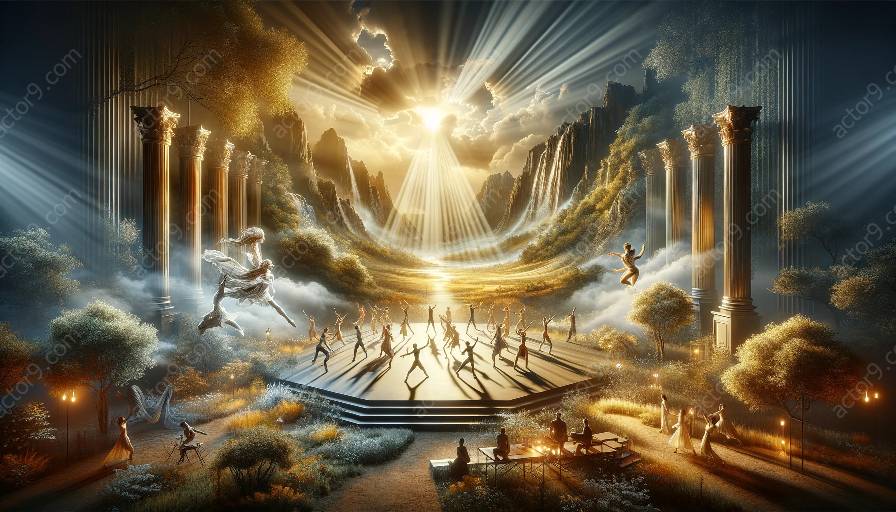Today, we will explore the intriguing interplay between lighting, time, rhythm, and audience perception in physical theatre performances. We'll delve into the crucial role of lighting in physical theatre and its profound impact on how audiences perceive and experience these performances.
The Role of Lighting in Physical Theatre
Before delving into the influence of lighting on audience perception of time and rhythm in physical theatre performances, it's essential to understand the fundamental role of lighting in physical theatre.
Physical theatre is a captivating form of dramatic performance that emphasizes the use of physical movement, gestures, and expressions to convey emotions, stories, and themes. Lighting serves as a powerful tool in physical theatre, enabling the creation of evocative atmospheres, accentuating movements, and guiding audience focus.
Lighting designers and directors collaborate closely with performers to craft lighting environments that complement the narrative, evoke emotions, and immerse audiences in the unfolding physical and emotional journeys on stage. Through the strategic use of light and shadow, physical theatre performances are elevated to captivating visual experiences that transcend the limitations of traditional spoken dialogue.
How Lighting Influences Audience Perception of Time
The interplay between lighting and the audience's perception of time in physical theatre is a fascinating aspect that deeply affects the immersive nature of the theatrical experience.
With carefully crafted illumination, lighting designers can manipulate the perception of time within a physical theatre performance. By harnessing the nuances of light intensity, color, and movement, they can subtly alter the perceived pace of the performance. For instance, warm, gentle lighting may create a sense of elongated time, allowing audiences to savor subtle movements and emotions, while sharp, dynamic lighting cues may convey a heightened sense of urgency and rapid progression.
Furthermore, lighting effects such as slow transitions between light and shadow or the gradual change of color temperatures can subtly manipulate the audience's perception of time, leading to a richer, more immersive experience.
Understanding the Impact of Lighting on Rhythm in Physical Theatre
Rhythm is a core component of physical theatre, encompassing the pacing, cadence, and flow of movements and emotions within a performance. Lighting plays a pivotal role in shaping and enhancing the perceived rhythms within physical theatre performances.
By skillfully synchronizing lighting changes with the performers' movements and emotional arcs, lighting designers can infuse the performance with a profound sense of rhythm. Dynamic and responsive lighting can accentuate the ebb and flow of movements, punctuate key emotional beats, and create a mesmerizing dance of light and shadow that mirrors the captivating rhythms of physical expression on stage.
Subtle shifts in lighting intensity and color can amplify the emotive cadences of a performance, drawing audiences into a mesmerizing visual symphony that harmonizes with the physical and emotional storytelling unfolding before them.
The Audience's Immersive Experience
Ultimately, the interplay between lighting, time, and rhythm in physical theatre performances culminates in an immersive and transformative experience for the audience. Through the masterful orchestration of lighting elements, physical theatres transport audiences into evocative realms where time becomes malleable, and rhythms become palpable.
As audiences become attuned to the nuances of lighting, they find themselves entranced by the symbiosis between visual artistry and performative expression. The artful manipulation of light not only influences the temporal and rhythmic dimensions of the performance but also amplifies the emotional resonance, enriching the overall impact on the audience.
Conclusion
The role of lighting in physical theatre is undeniably influential, shaping the audience's perception of time and rhythm while enhancing their immersive experiences. Lighting serves as a silent yet powerful collaborator, working in tandem with performers to craft visually captivating narratives that transcend traditional temporal and rhythmic bounds.
By understanding and embracing the profound impact of lighting in physical theatre, we gain a deeper appreciation for the symbiotic relationship between light, time, rhythm, and audience perception in these breathtaking performances.




































